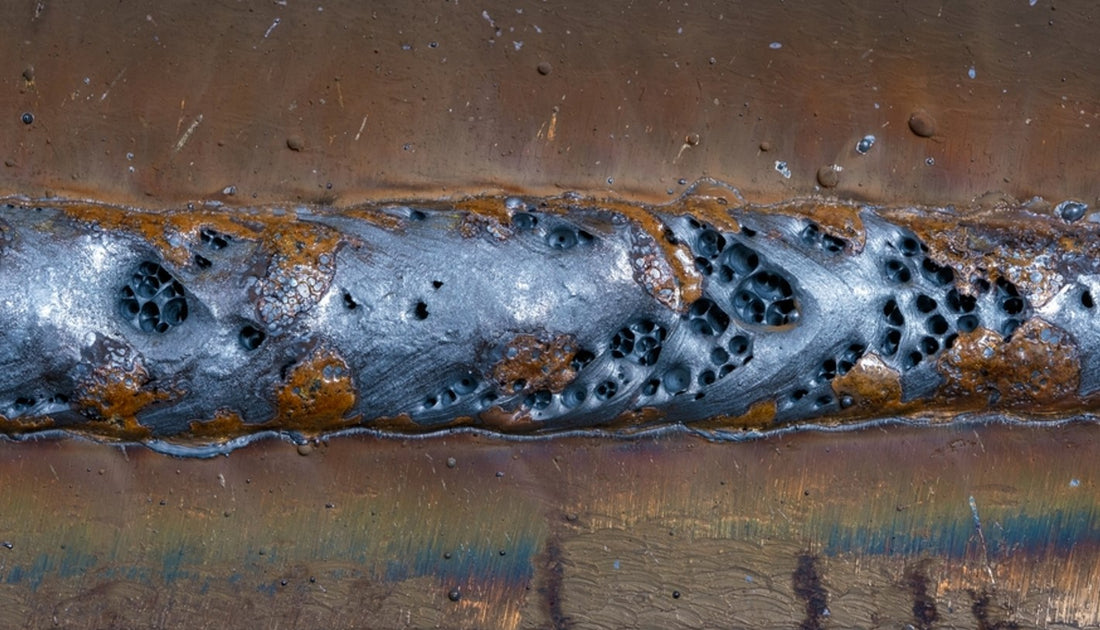Understanding Porosity in Welding: Checking Out Causes, Results, and Avoidance Strategies
As specialists in the welding sector are well conscious, recognizing the causes, effects, and prevention techniques associated to porosity is crucial for achieving robust and reputable welds. By delving right into the root creates of porosity, analyzing its detrimental effects on weld quality, and checking out reliable avoidance approaches, welders can enhance their knowledge and skills to create high-grade welds constantly.
Common Sources Of Porosity
Porosity in welding is mainly triggered by a combination of factors such as contamination, improper securing, and inadequate gas coverage throughout the welding process. Contamination, in the type of dirt, oil, or rust on the welding surface, produces gas pockets when heated, leading to porosity in the weld. Improper shielding occurs when the shielding gas, generally utilized in processes like MIG and TIG welding, is unable to completely protect the liquified weld pool from responding with the surrounding air, leading to gas entrapment and succeeding porosity. Additionally, poor gas insurance coverage, frequently as a result of incorrect flow prices or nozzle positioning, can leave parts of the weld unprotected, permitting porosity to create. These factors collectively add to the development of voids within the weld, damaging its stability and possibly creating structural issues. Recognizing and attending to these usual reasons are important action in protecting against porosity and making sure the quality and stamina of bonded joints.
Results on Weld High Quality
The existence of porosity in a weld can substantially jeopardize the general high quality and integrity of the welded joint. Porosity within a weld creates gaps or dental caries that damage the framework, making it much more vulnerable to breaking, corrosion, and mechanical failing.
Moreover, porosity can impede the efficiency of non-destructive testing (NDT) techniques, making it testing to detect various other flaws or interruptions within the weld. This can cause considerable security worries, particularly in crucial applications where the structural integrity of the bonded elements is paramount.

Prevention Techniques Overview
Offered the destructive influence of porosity on weld quality, effective prevention strategies are crucial to maintaining the structural integrity of bonded joints. In addition, picking the ideal welding criteria, such as voltage, existing, and take a trip rate, can assist lessen the danger of porosity formation. By integrating these prevention techniques into welding techniques, the occurrence of porosity can be dramatically reduced, leading to stronger and more reliable bonded joints.
Relevance of Correct Protecting
Appropriate protecting in welding plays a vital function in avoiding atmospheric contamination and making certain the honesty of welded joints. Shielding gases, such as argon, helium, or a mixture of both, are generally made use of to safeguard the weld pool from responding with aspects in the air like oxygen and nitrogen. When these responsive aspects enter call with the hot weld swimming pool, they can trigger porosity, resulting in weak welds with reduced mechanical properties.

Insufficient securing can lead to numerous defects like porosity, spatter, and oxidation, endangering the structural stability of the bonded joint. Adhering to correct shielding methods is essential to create high-grade welds with minimal flaws and ensure the longevity and dependability of the bonded components.
Tracking and Control Methods
How can welders efficiently keep track of and control the welding process to ensure optimum outcomes and stop flaws like porosity? By constantly keeping track of these variables, welders can identify deviations from home the ideal problems and make prompt modifications to avoid porosity formation.

Additionally, applying correct training programs for welders is vital for monitoring and regulating the welding process effectively. What is Porosity. Educating welders on the significance of maintaining consistent specifications, such as correct gas securing and take a trip speed, can assist prevent porosity concerns. Routine assessments and qualifications can likewise ensure that welders excel in surveillance and managing welding procedures
Additionally, making use of automated welding systems can improve monitoring and control capacities. These systems can precisely control welding parameters, minimizing the possibility of human mistake and guaranteeing regular weld quality. By integrating advanced tracking technologies, training programs, and automated systems, welders Get More Info can successfully monitor and manage the welding procedure to lessen porosity issues and accomplish high-quality welds.
Final Thought

Comments on “What is Porosity in Welding: Usual Resources and Efficient Treatments”